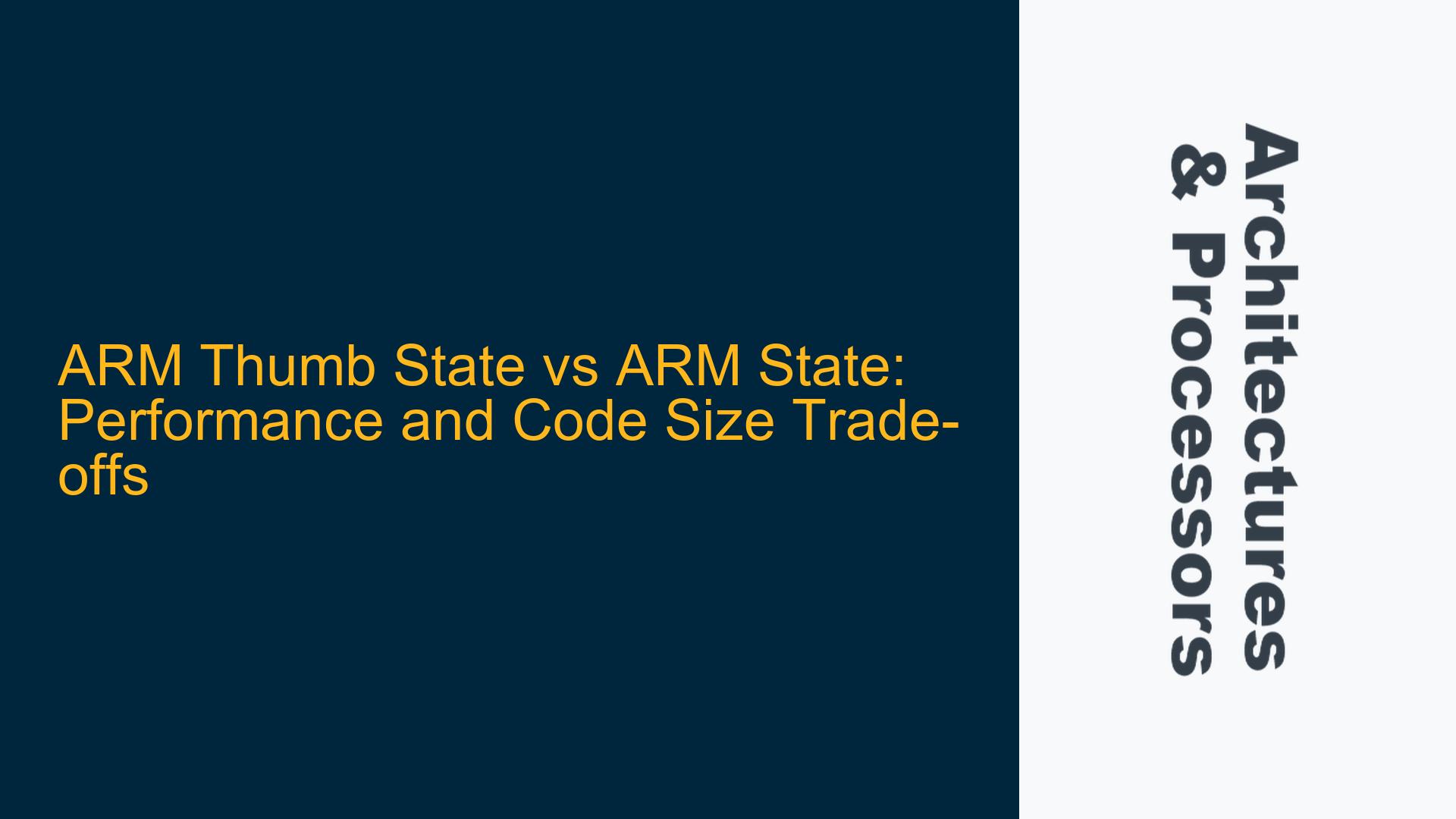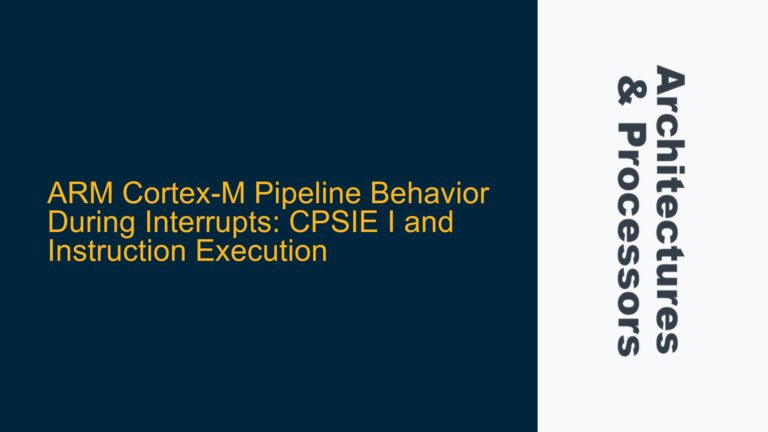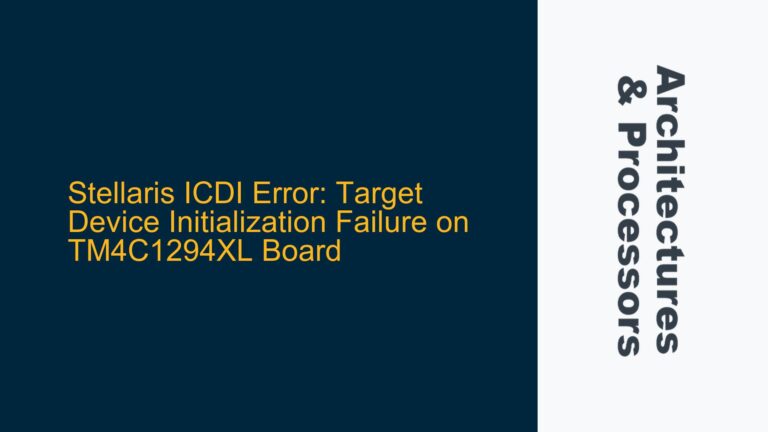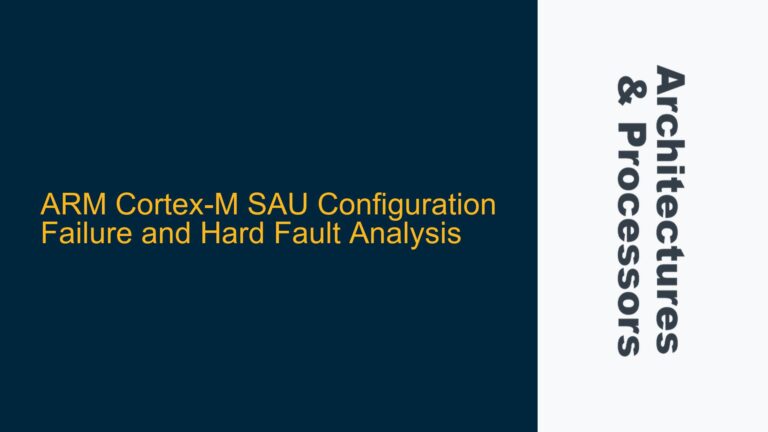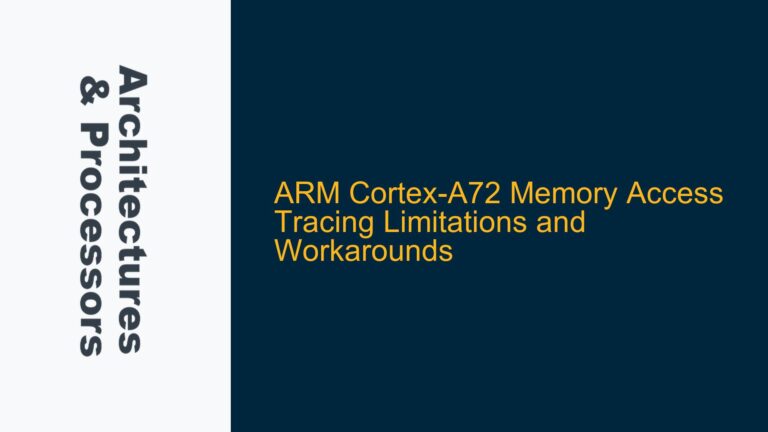ARM Thumb State Execution Efficiency and Code Density Advantages
The ARM architecture provides two primary instruction sets: the ARM state, which executes 32-bit instructions, and the Thumb state, which executes 16-bit instructions. The Thumb state was introduced to address the need for higher code density and improved performance in embedded systems, where memory footprint and power consumption are critical factors. The Thumb instruction set achieves this by using a subset of the 32-bit ARM instructions, encoded into 16-bit formats. This reduction in instruction size allows more instructions to be stored in the same amount of memory, reducing the overall code footprint.
Modern ARM processors, particularly those based on the ARMv6-M architecture and later, have evolved the Thumb instruction set into a blended 16-bit and 32-bit instruction set known as Thumb-2. Thumb-2 extends the original Thumb instruction set by adding 32-bit instructions, enabling it to perform operations that were previously only possible in ARM state. This hybrid approach combines the code density benefits of 16-bit instructions with the performance advantages of 32-bit instructions, making Thumb-2 a highly efficient instruction set for a wide range of applications.
The primary advantage of executing instructions in Thumb state is the reduction in code size. Thumb instructions are typically 65-70% the size of their ARM state counterparts, which translates to significant memory savings. This is particularly beneficial in resource-constrained environments, such as microcontrollers and IoT devices, where memory is often limited. Additionally, the smaller instruction size reduces the number of memory accesses required to fetch instructions, which can lead to lower power consumption and improved performance due to reduced cache pressure.
Another key advantage of Thumb state execution is the potential for improved raw performance. In many cases, Thumb-2 code can execute faster than equivalent ARM state code due to the reduced instruction fetch bandwidth and improved instruction cache utilization. The smaller instruction size allows more instructions to be stored in the instruction cache, reducing cache misses and improving overall execution efficiency. Furthermore, the Thumb-2 instruction set includes a number of optimizations and enhancements that enable it to perform complex operations more efficiently than the original Thumb instruction set.
Memory Bandwidth and Cache Utilization in Thumb State Execution
One of the critical factors contributing to the performance advantages of Thumb state execution is the reduction in memory bandwidth requirements. Since Thumb instructions are smaller than ARM instructions, fewer bytes need to be fetched from memory for the same number of instructions. This reduction in memory bandwidth can lead to significant performance improvements, particularly in systems with limited memory bandwidth or high memory latency.
The smaller instruction size also has a positive impact on cache utilization. Instruction caches are typically organized into fixed-size cache lines, and the smaller size of Thumb instructions allows more instructions to be packed into each cache line. This increases the effective capacity of the instruction cache, reducing the likelihood of cache misses and improving overall performance. In systems with small instruction caches, such as many embedded systems, this can have a substantial impact on performance.
In addition to the benefits of reduced memory bandwidth and improved cache utilization, the Thumb-2 instruction set includes a number of performance-enhancing features. For example, Thumb-2 introduces a number of new instructions that allow more efficient execution of common operations, such as bit manipulation, conditional execution, and branch operations. These instructions can reduce the number of cycles required to execute certain operations, further improving performance.
The Thumb-2 instruction set also includes support for hardware divide instructions, which can significantly reduce the number of cycles required to perform division operations compared to software-based division routines. This is particularly beneficial in applications that require frequent division operations, such as digital signal processing and control systems.
Implementing Thumb State Execution in ARM-Based SoCs
When designing an ARM-based SoC, it is important to consider the trade-offs between ARM state and Thumb state execution. While Thumb state execution offers significant advantages in terms of code density and performance, there are some scenarios where ARM state execution may be more appropriate. For example, certain operations, such as floating-point arithmetic and complex memory operations, may be more efficiently executed in ARM state due to the availability of 32-bit instructions and additional addressing modes.
To maximize the benefits of Thumb state execution, it is important to carefully design the instruction cache and memory subsystem to take advantage of the smaller instruction size. This may involve optimizing the cache line size, prefetching strategies, and memory access patterns to minimize cache misses and maximize instruction fetch efficiency.
In addition to hardware design considerations, software development tools and compilers play a critical role in optimizing Thumb state execution. Modern ARM compilers, such as ARM Compiler and GCC, include advanced optimization techniques that can generate highly efficient Thumb-2 code. These optimizations include instruction scheduling, loop unrolling, and function inlining, which can further improve performance and reduce code size.
When developing software for ARM-based SoCs, it is important to use the appropriate compiler flags and optimization settings to ensure that the generated code takes full advantage of the Thumb-2 instruction set. For example, the -mthumb flag can be used to instruct the compiler to generate Thumb-2 code, while the -O2 or -O3 optimization flags can be used to enable advanced optimizations.
In conclusion, the ARM Thumb state offers significant advantages in terms of code density and performance, particularly in resource-constrained environments. By carefully designing the hardware and software to take advantage of the Thumb-2 instruction set, ARM-based SoCs can achieve higher performance and lower power consumption, making them well-suited for a wide range of embedded applications.
